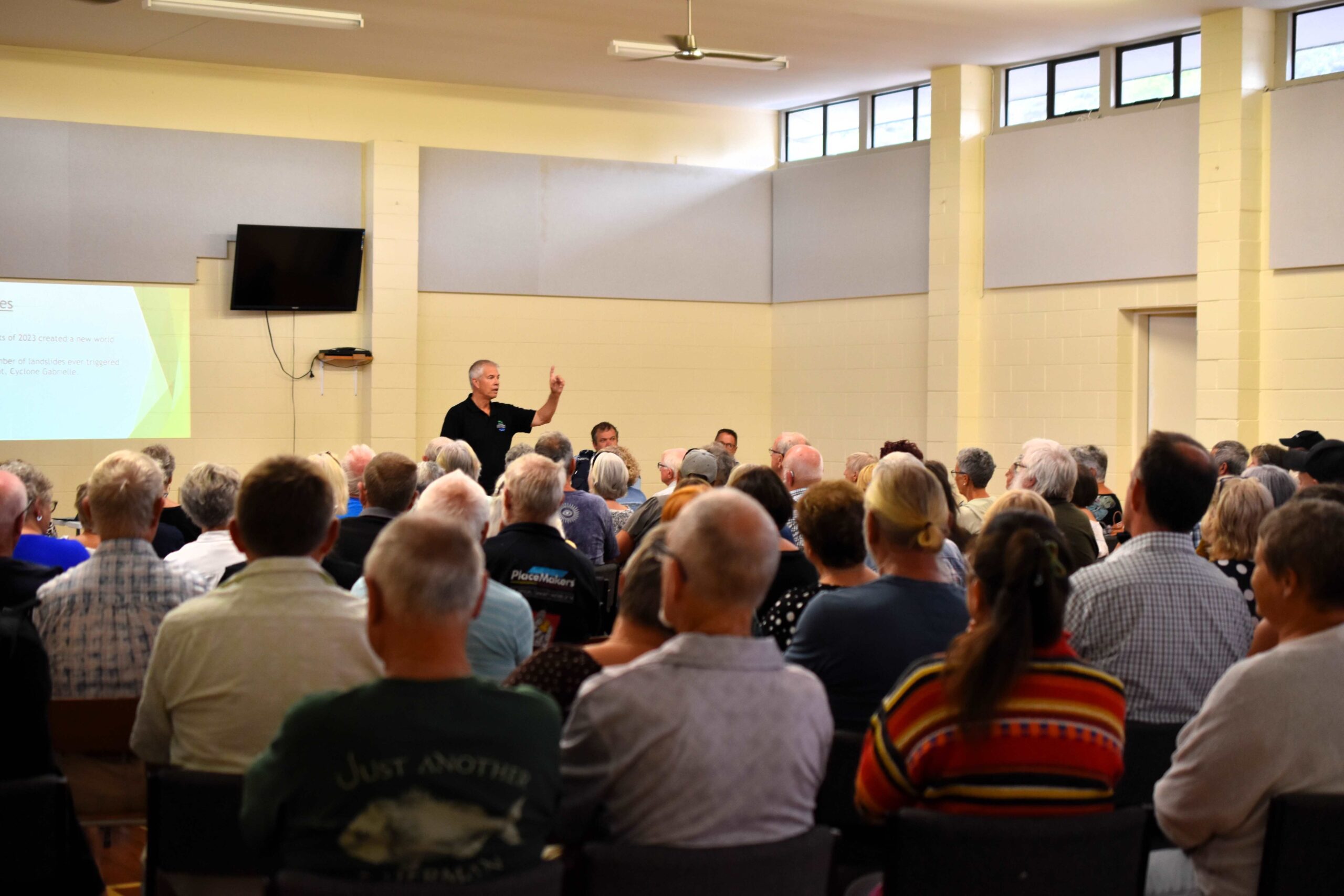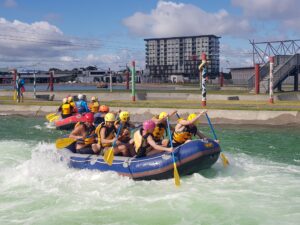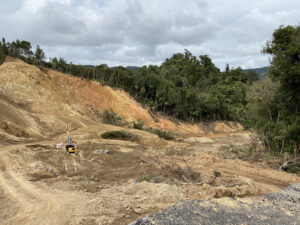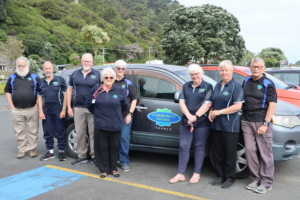Voices and passions were high at a public meeting in Te Puru last week, as residents shared their concerns about the safety of Thames Coast Road with the council, Waka Kotahi, and police.
The February 27 meeting was attended by nearly 200 residents. For 90 minutes, they spoke about issues ranging from drivers ignoring speed signs, overtaking dangerously, and causing near misses; to a lack of footpaths and safe walking areas. Particularly dangerous areas were pointed out: the public toilets in Thornton Bay being across the busy highway from the beach; the bridge between Tapu and Te Mata lacking a footpath; higher speed limits in Whakatete Bay.
“I’m feeling rage,” one woman from Waiomu said through tears.
“We can’t cross the road in Waiomu to get to the park, because people drive like maniacs. It feels like going through the bureaucratic process is just going to be red tape… Everyone’s hands are tied. But ours aren’t and I feel like it’s time for us to do something. The community is at its limit.”
A man said of Thornton Bay: “It’s been nicknamed Bathurst…Why there hasn’t been deaths there I don’t know.”
Another woman said, “The overtaking within our communities – I’m sure we’ve all got tales of nearly being part of a statistic.”

Waka Kotahi representative Andrew Wharekawa-Smith took notes as residents tossed out suggestions to improve the road. Ideas included more pull-in bays; double yellow lines through the bays; speed humps or other traffic calming measures; speed cameras; pedestrian crossings; electronic speed signs; extra signage including “children crossing” signs; and more police patrols.
All the officials present at the meeting acknowledged the community’s frustration, but their response was largely for the community to “be the squeaky wheel”, saying residents needed to push for change from the government.
Andrew said the temporary speed limit signs, reducing speed along the coast in the wake of last year’s summer storms, were only allowed to remain until emergency road works were complete. Rules for permanent changes are currently under review by the Ministry of Transport, and he asked residents to email their concerns, saying the new government would likely pay attention to strong community support.
Sergeant Scott Tyrrell, the officer in charge of Hauraki’s road policing unit, said there was only so much his team of five could do to catch speeders.
“My biggest issue is resourcing,” he said.
“It’s ‘see something, do something’, and we don’t have the resources to see everything.”
He encouraged the public to call *555 with details of dangerous drivers, or take dashcam footage into the police station.
Thames Coromandel District Mayor Len Salt, meanwhile, encouraged everyone to email their concerns and suggestions to local MP Scott Simpson.
“Don’t be a passive person sitting in your community; make your voice heard,” he said.
Mayor Salt also said the council was aiming to invest heavily in the region’s roads, and was in the process of applying for funding from two sources. Public submissions on the TCDC regional land transport plan, asking for $811 million plus $64 million for maintenance and renewals, closed on March 4.
The council’s bid for over $1 billion from the national cyclone recovery fund is still open.
The last word at the meeting came from Senior Constable Gareth Carter, urging personal responsibility on the road.
“Everyone here thinks it’s Aucklanders speeding… A huge majority of the people we stop are locals.”
DETAILS: Concerns about road safety, speed, and requests for improvement can be emailed to scott.simpson@parliament.govt.nz and speedmanagement@nzta.govt.nz. Submissions supporting TCDC’s request for cyclone recovery funding can be sent to scott.simpson@parliament.govt.nz.





